There’s something to be said about being able to hammer out an entire roll of thirty-six exposures in a single location in a short period of time. Sure, it’s easy to do when you have a medium format roll with 15, 12 or 10 exposures. But thirty-six can be a bit trying. Thankfully, the introduction of multiple lenses helps, especially when you set limits on how many frames you can shoot with one focal length. This week we’re still in Milton (ish) [Esquesing actually] exploring one of the oldest churches in the region, Boston Presbyterian Church. And to add to this week’s excitement, these were shot on World Wide Pinhole Photography Day. So I decided in addition to traditional lenses, I also threw in my Nikon Pinhole adapter!
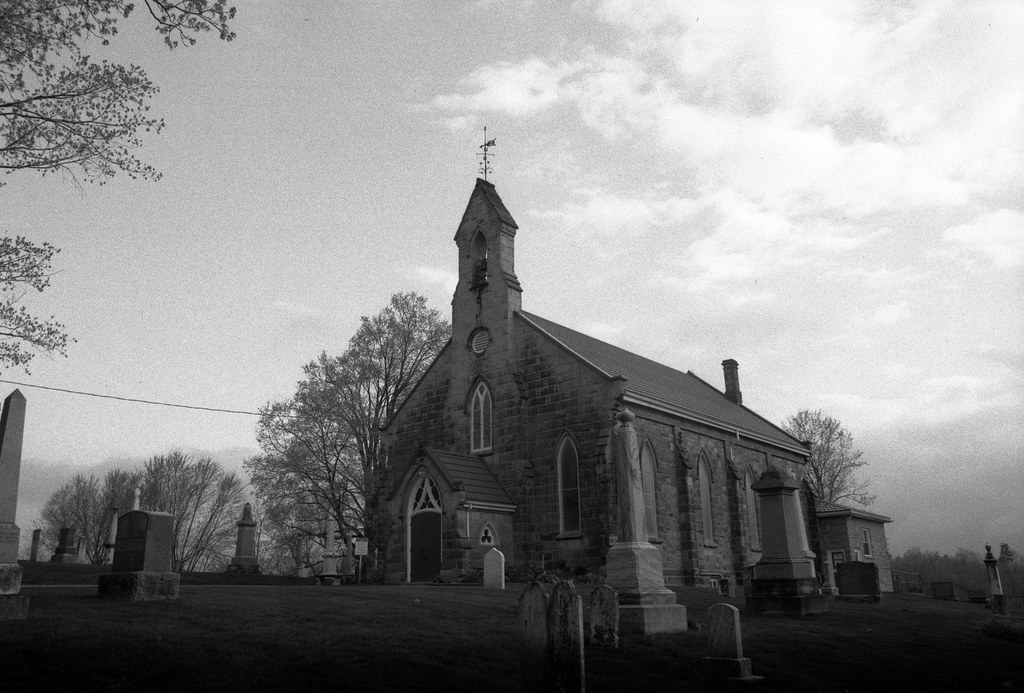
The Scotch Block, could there be a better place in my part of Ontario to look for the earliest known Presbyterian Congregation. Settlement in the area began in 1819, in what was known as the Esquesing Township and because of the number of Scottish immigrants, the area became known by the Scotch Block name, and it remains so until 2021. The earliest recorded instant of Christian worship dates to 1820 when Rev William Jenkins lead a group of Scottish Presbyterians on a farm of Andrew Laidlaw. Rev Jenkins preached on the book of Ezikial from the stump of a felled tree while the congregation sat on felled logs. Jenkins and those pioneers petitioned the Presbytery of York of the Church of Scotland to establish the area as a Station where Gospel Ordinances be dispensed. In 1824 the petition was granted, and the congregation purchased a part of the Laidlaw property to build a meeting house and cemetery. Rev Peter Ferguson was appointed to the congregation during that construction, and the meeting house completed in 1835. The simple wood frame building featured a gallery, a high pulpit with a gate and sounding board, a precentor’s desk below the pulpit where a member of the congregation would set the timing for the speaking of the Psalms. There was, at that time, no singing within the Presbyterian Church. Rev Ferguson would lead the congregation during a great deal of division both within the Church and Canada as a whole. In 1835 a group left the congregation to form an Anti-Burgher congregation (Associate Presbyterian), building their own meeting house south of the Established Church (where Third Line and Number Five Sideroad intersect). The next division took place in 1837; the Seceder church would build a new meeting house north of the Established Church also on Third Line. The Seceder Church included members who supported the growing Reform movement. Many supported the ideas of William Lyon MacKenzie and went to Toronto to fight in the Battle of Montgomery’s Tavern. Although many would spread the rumour that MacKenzie sheltered in the Scotch Block during his flight from Toronto following the defeat by loyalist forces. This remains part of the MacKenzie mythos but never actually happened. The third and largest split took place in 1844, during the formation of the Free Presbyterian Church or the Great Scism. The Free Church reached an agreement to share the meeting house with the Established congregation. To keep score, by 1850, there were along the same stretch of Third Line, four separate Presbyterian congregations in three different church buildings. The Free Church called Rev William Rintole and took the name Boston Presbyterian Church to separate their identity from the Established Church. The name came from Rev Thomas Boston, a preacher and theologian in Scotland where many, including the Laidlaw’s, had been born and emigrated from Canada. The Free Church began to make overtures for reunification in 1858, the Sceder and Established church would respond favourably and reunite in 1861. The sudden increase in congregants required a new building. The church retained architect James A. Smith to design a new stone Gothic revival building, and in 1868 the cornerstone would be laid. Construction was overseen by Charles Blackwell and Thomas Henderson with volunteer labour provided from the congregation. The new structure opened to worship in 1870. In 1875 the congregation agreed to join the Presbyterian Church in Canada, unifying the various branches of Presbyterians in Canada. Only the Associate church (which had in 1858 joined with a Reformed church to form Mansefield United Church and built a new meeting house in 1866) remained separate from the Presbyterian Church in Canada. An organ would be installed in 1882 after the Session approved the use of music in 1879. Further renovations replaced the original wood-burning stoves with a modern furnace in 1905. Mansewood United Church closed in 1935, and their members rejoined Boston, and many of those families continue to attend the church today. The last set of renovations took place in the 1960s with a new basement with a church hall, parlour, washrooms, and classrooms. The current minister, Rev Shawn Croll, was inducted in 1989 and continues to lead a vibrant and rural congregation still today.
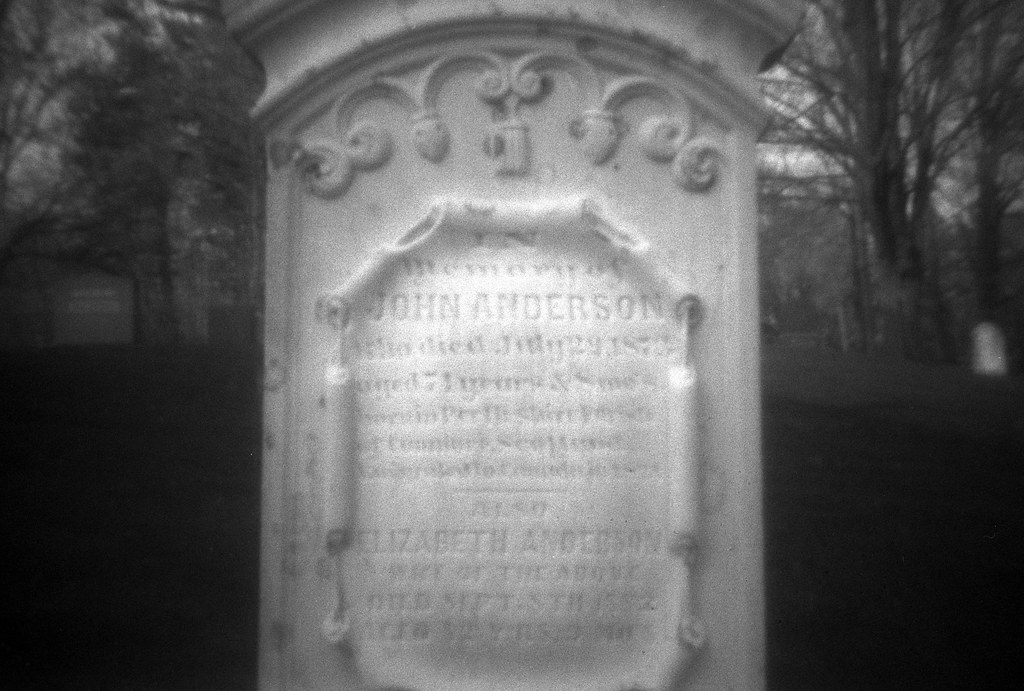
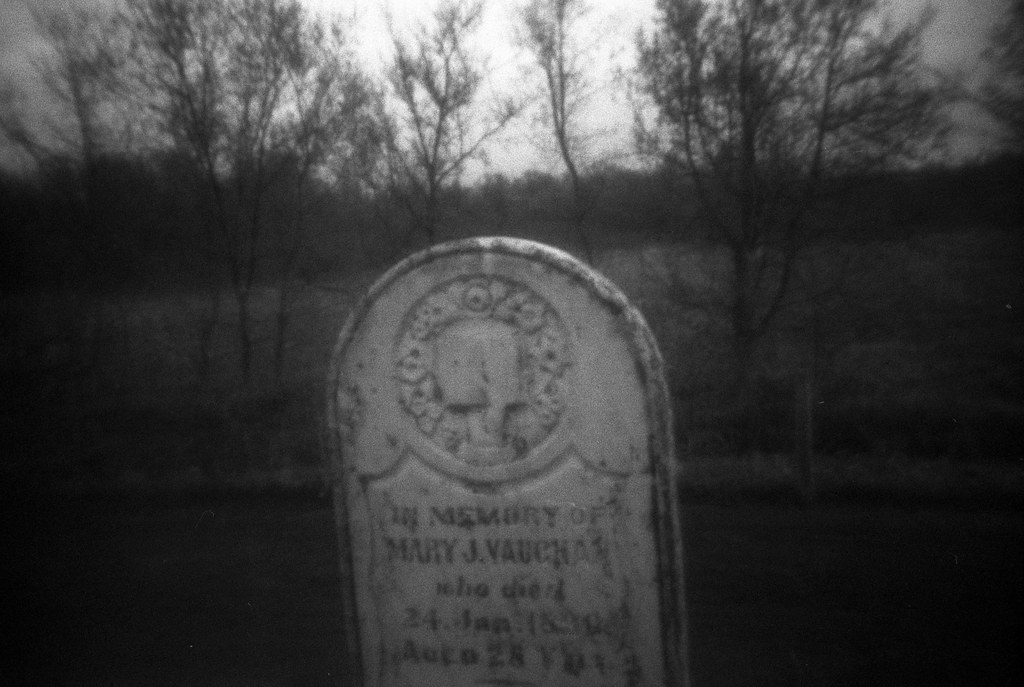
The featured image is a no brainer, a grand overview of Boston Church in full Gothic Revival glory, and the only image from the 28mm lens I featured this week. While I wasn’t overly happy with all my pinhole images, they weren’t bad; I’m getting better at keeping the camera close to the subject matter, which helps enhance the results you get from the pinhole. I ended up featuring new grave markers, which caught my eye both in the detail I captured and the softness. And acts as almost visual whiplash to the next two grave markers. While most of the older markers are well maintained and cleaned, the next one featured still has some grime on it and offers up more character. Like the stones from earlier in the year they have far more character than modern stones. And of course, I had to find the memorial to Andrew Laidlaw, who sold this piece of property to the congregation back in 1824 and still stands today. The Laidlaw farm and farmhouse dating to 1861 still stands south of the Boston Church today. And the final two images, I used my 105mm to capture a couple of details of the building from the functioning bell; you can see the pull cord against the stone and the cornerstone of the building with the 1868 date.
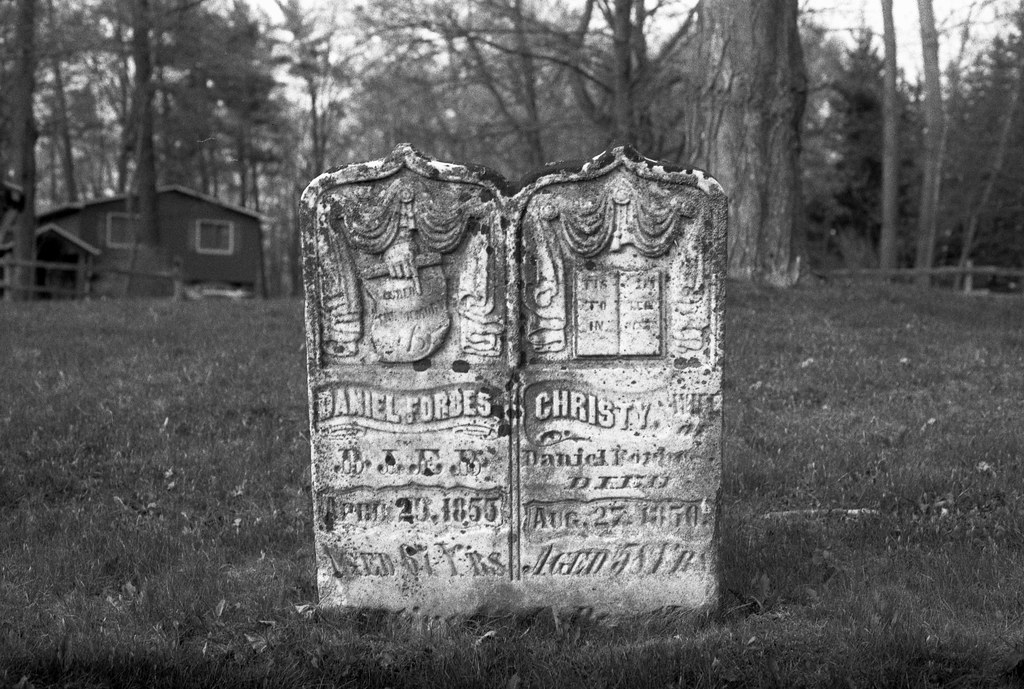
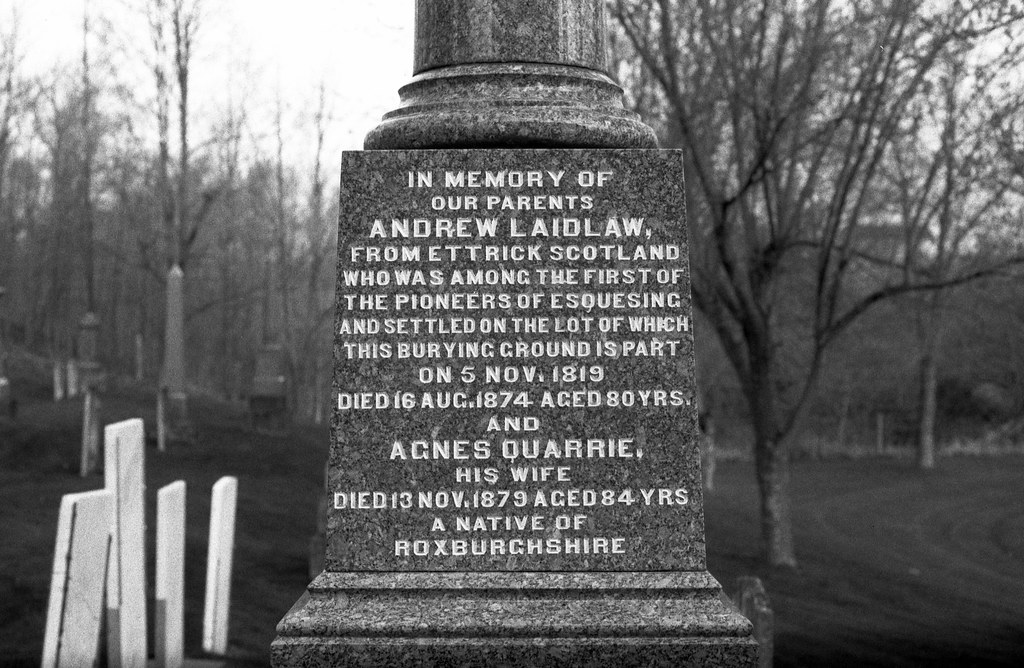
I ended up visiting Boston Presbyterian Church on a Sunday morning early in the day before heading back into Milton to help run my own church’s worship service from our sanctuary. And that’s important to note because, as I mentioned early I ended up shooting on World Wide Pinhole Photography Day (last Sunday in April), which allowed me to include something rather different, a pinhole adapter lens. So my kit, in addition to my 28mm, 50mm, 105mm lens, gave something of a different flavour. To help me out, I shot the first ten frames using the pinhole adapter, then traditional lenses for the remainder of the roll. To help meet the pinhole shots, I used the ReveniLabs Hotshoe meter as the built-in meter could not take a reading through the pinhole. The idea was that I went in looking at all different composition to make the area far more interesting. For the first time, I also did a full one-stop over-exposure of the film, shooting it at ASA-100 and then pulled in development using Adox FX-39 II, a developer I discovered last year and has never let me down. The results were decent, sharp images but a little grainy. But then again, that’s become par for the course with Fomapan 200.


After sticking around the Halton region for the past several weeks, I need a change, so we’re heading out to the small town of Palmerston, Ontario.